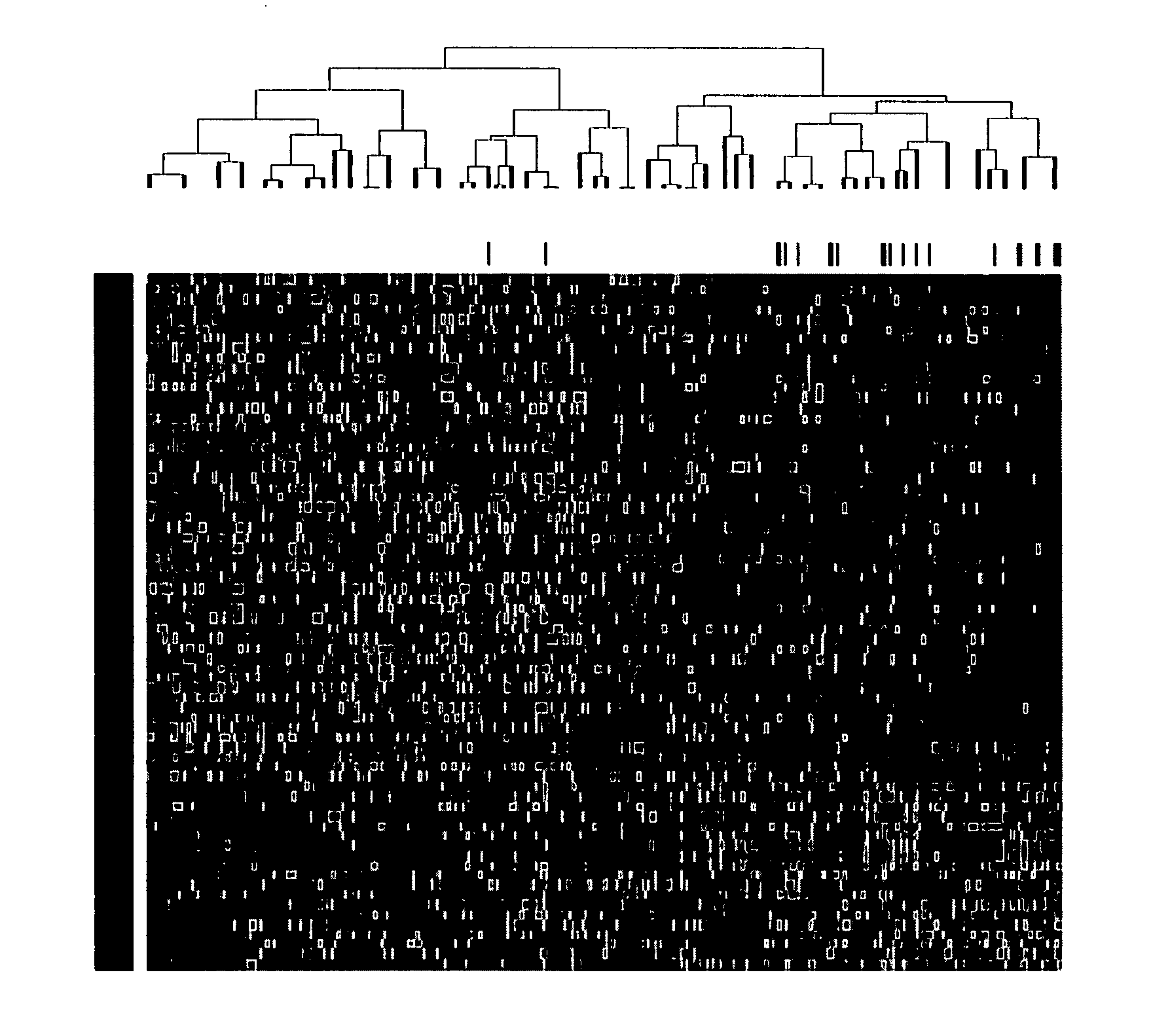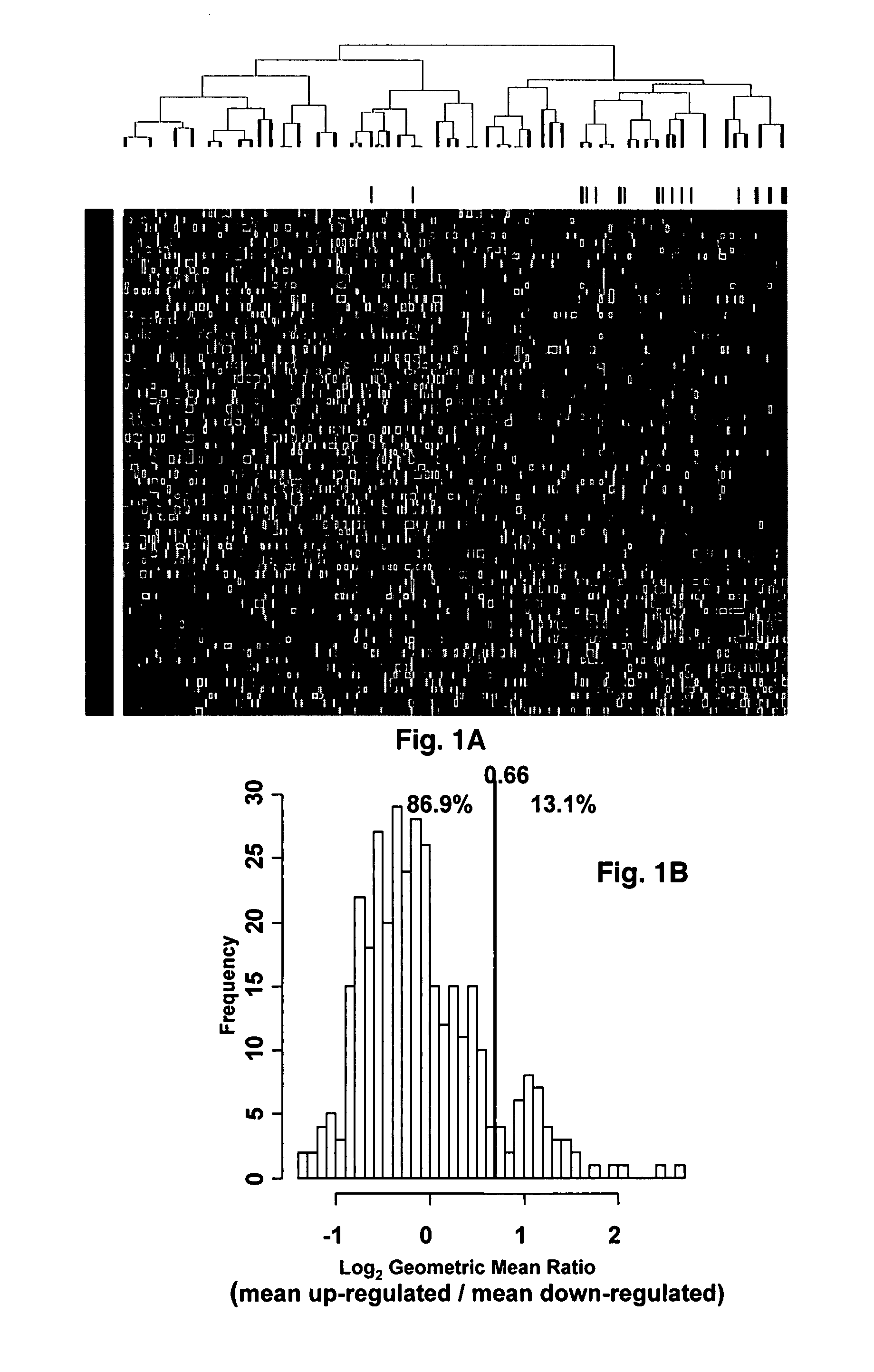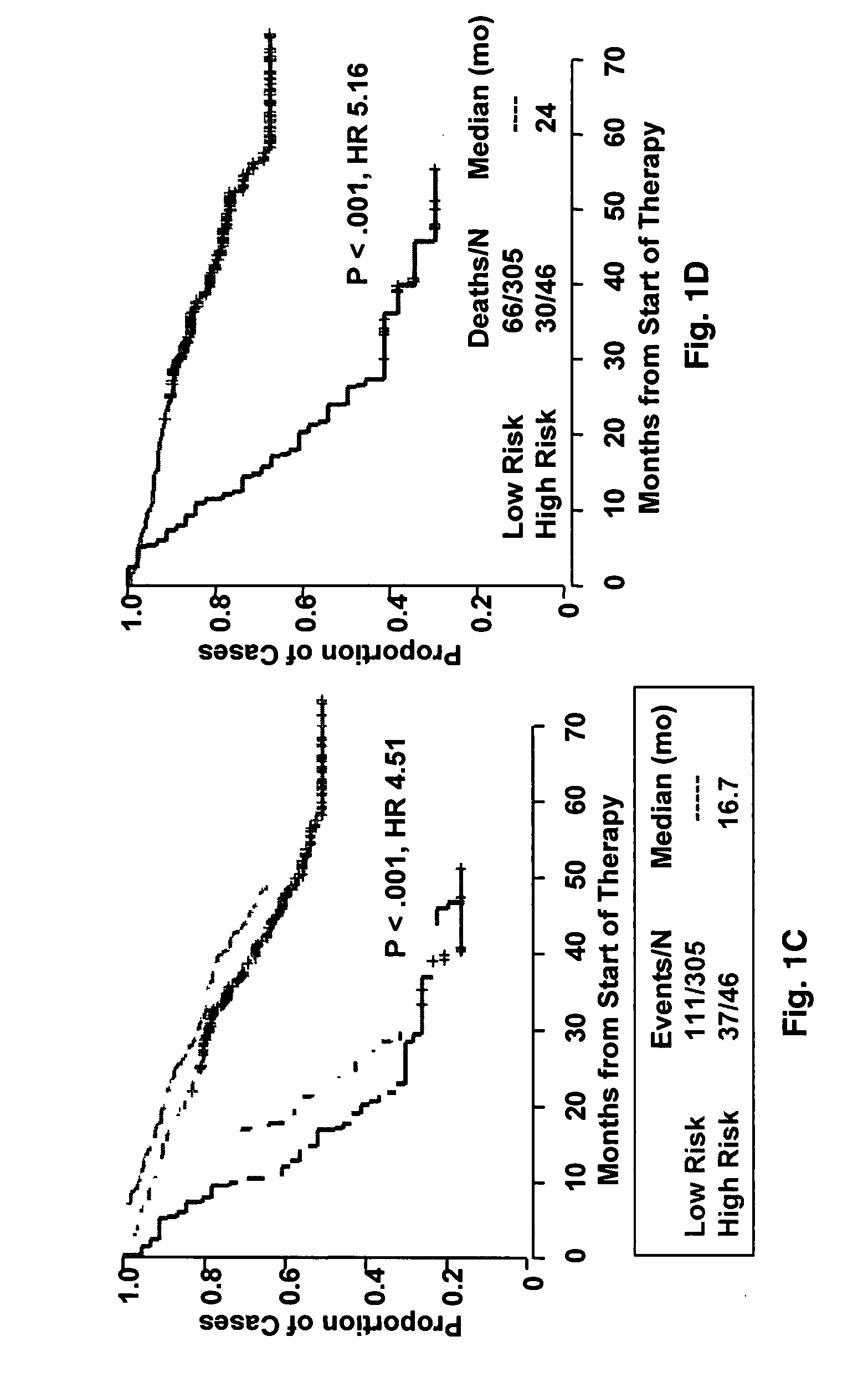Gene expression profiling based identification of genomic signature of high-risk multiple myeloma and uses thereof
a multiple myeloma and gene expression technology, applied in the field of cancer research, can solve the problems of inability to identify lesions that promote aggressive clinical course, inability to detect lesions, etc., and achieve the effect of high degree of correlation
- Summary
- Abstract
- Description
- Claims
- Application Information
AI Technical Summary
Benefits of technology
Problems solved by technology
Method used
Image
Examples
example 1
Patients
[0041]Purified plasma cells were obtained from normal healthy subjects and from patients with monoclonal gammopathy of undetermined significance (MGUS) and with overt myeloma requiring therapy. Patient characteristics of training (n=351) and validation groups (n=181) have been previously described.9 Of 351 cases in the training group, 51 also had samples taken at relapse. Both protocols utilized induction regimens, followed by melphalan-based tandem autotransplants, consolidation chemotherapy and maintenance treatment.
example 2
Gene Expression Profiling
[0042]Plasma cell purifications and GEP, using the Affymetrix U133Plus2.0 microarray, were performed as previously described [9,16]. Microarray data and outcome data on the 532 patients used in this study have been deposited in the NIH Gene Expression Omnibus under accession number GSE2658.
example 3
Statistical and Microarray Analyses
[0043]Affymetrix U133Plus2.0 micro-arrays were preprocessed using GCOS1.1 software and normalized using conventional GCOS1.1 scaling. Log rank tests for univariate association with disease-related survival were performed for each of the 54,675‘Signal’ summaries. Specifically, log rank tests were performed for quartile 1 (Q1) vs. quartiles 2-4 (Q2-Q4) and quartile 4 (Q4) vs. quartiles 1-3 (Q1-Q3) in order to identify under- and over expressed prognostic genes, respectively. A false discovery rate cut-off of 2.5% was applied to each list of log-rank P-values [17] yielding 19 under- and 51 over expressed probe sets. Heat-map-column dendrograms were computed with hierarchical clustering using Pearson's correlation distances between patient pairs' log2-scale expression. Column-dendrogram branches were sorted left-to-right based upon each patient's difference between average log2-scale expression of the 51 up-regulated and the 19 down-regulated genes: th...
PUM
| Property | Measurement | Unit |
|---|---|---|
| Mass | aaaaa | aaaaa |
| Volume | aaaaa | aaaaa |
| Volume | aaaaa | aaaaa |
Abstract
Description
Claims
Application Information
 Login to View More
Login to View More - R&D
- Intellectual Property
- Life Sciences
- Materials
- Tech Scout
- Unparalleled Data Quality
- Higher Quality Content
- 60% Fewer Hallucinations
Browse by: Latest US Patents, China's latest patents, Technical Efficacy Thesaurus, Application Domain, Technology Topic, Popular Technical Reports.
© 2025 PatSnap. All rights reserved.Legal|Privacy policy|Modern Slavery Act Transparency Statement|Sitemap|About US| Contact US: help@patsnap.com



